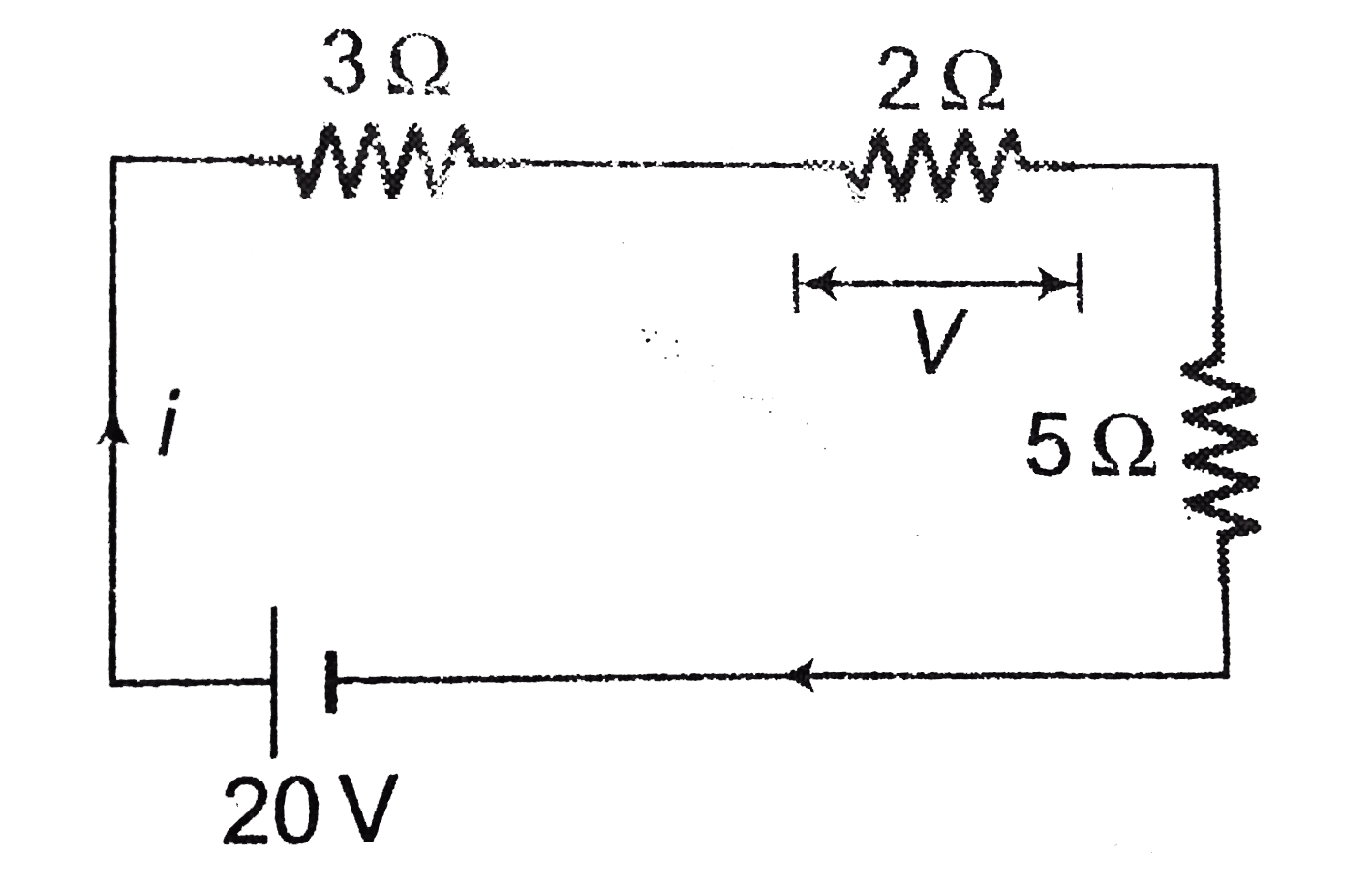In the circuit shown in figure find the heat developed across each resistance in 2s.

The 6Ωand3Ω resistances are in parallel. So, their combined resistance is
1R=16+13=12
or R=2Ω
The equivalent simple circuit can be drawn as shown.

Current in the circuit i=netemftotal resistance=203+2+5=2A
V=iR=(2)(2)=4V
i.e. Potential difference across 6Ωand3Ω resistance are 4V. Now,
H3Ω (which is connected in series) =i2Rt=(2)2(3)(2)=24J
H6Ω=V2Rt=(4)26(2)=163J
H3Ω (which is connected in parallel ) =V2Rt=(4)2(2)3=323J
and H5Ω=i2Rt=(2)2(5)(2)=40J
Related Playlists
- BOOK - DC PANDEY ENGLISHCHAPTER - CURRENT ELECTRICITYEXERCISE - Example Type 12videos
CURRENT ELECTRICITY
- BOOK - DC PANDEY ENGLISHCHAPTER - CURRENT ELECTRICITYEXERCISE - Example Type 21videos
CURRENT ELECTRICITY
- BOOK - DC PANDEY ENGLISHCHAPTER - COMMUNICATION SYSTEMEXERCISE - Subjective11videos
COMMUNICATION SYSTEM
- BOOK - DC PANDEY ENGLISHCHAPTER - ELECTROMAGNETIC INDUCTIONEXERCISE - Medical entrances gallery25videos
ELECTROMAGNETIC INDUCTION
Similar Questions
In the circuit shown in figure find Vab at 1s
 View Solution
View SolutionIn the circuit shown in figure heat developed across 2Ω,4Ωand3Ω resistances are in the ratio
 View Solution
View SolutionIn the circuit shown in figure potential differences across 6Ω resistance is 4 volt. Find V and i values across each resistance. Also find emf E of the applied battery.
 View Solution
View SolutionIn the circuit shown in figure potential difference across
 View Solution
View SolutionIn the circuit diagram shown in figure, potential difference across 3Ω resistance is 20 V. Then, match the following two columns.
 View Solution
View SolutionIn the L-R circuit as shown in figure, potential difference across the resistance at some instant is 4 V. Then
 View Solution
View SolutionFor the circuit shown in figure, determine the voltage across 4Ω resistors in volt ?
 View Solution
View SolutionIn the circuit shown, reading of the voltmeter connected across 400Ω resistance is 60 V. If it is connected across 300Ω resistance then reading in volt will be
 View Solution
View SolutionIn the circuit shown in the following figure, find
 View Solution
View SolutionIn the circuit shown in figure resistance of each wire is r. Net resistance across
 View Solution
View Solution


